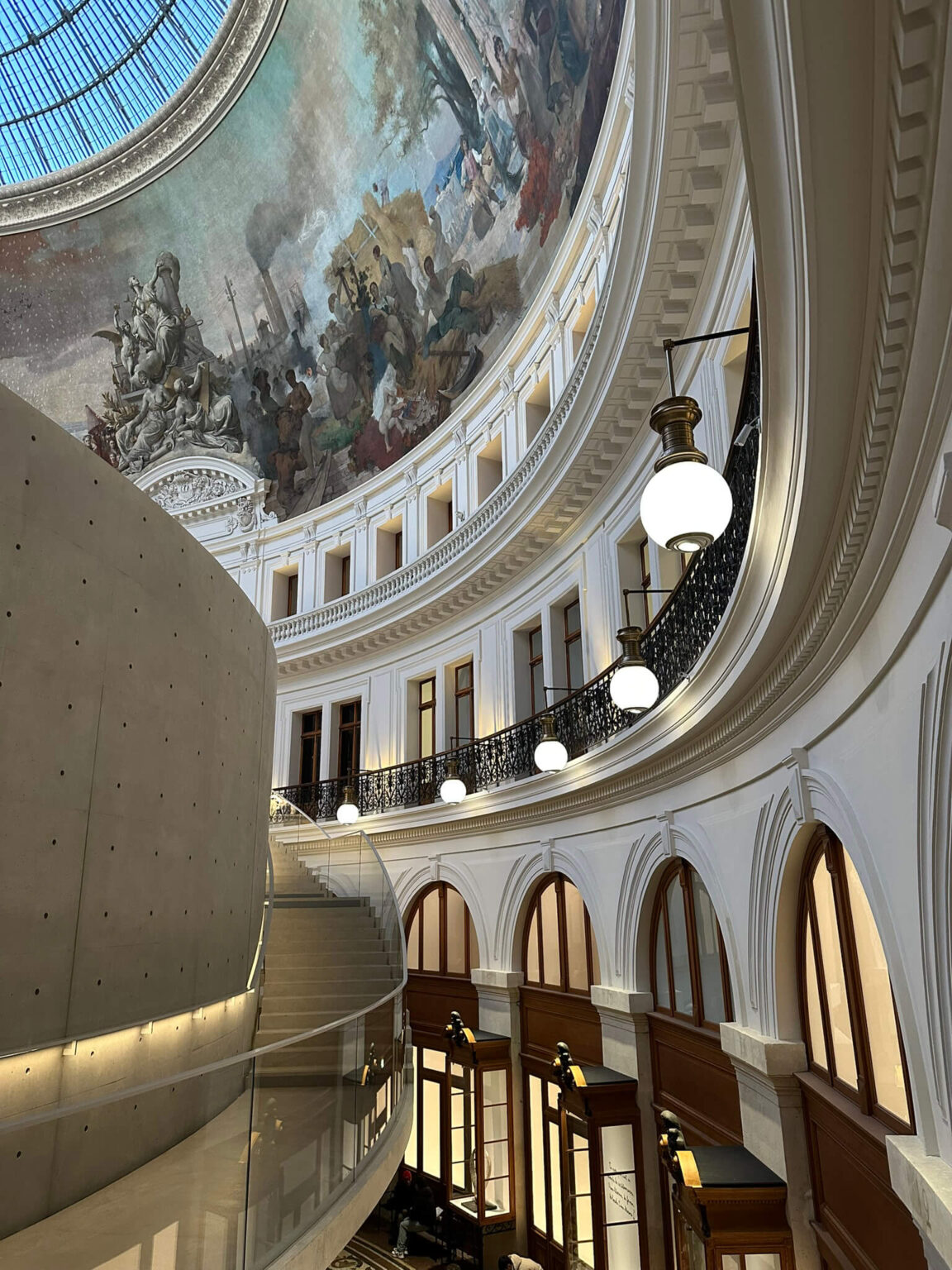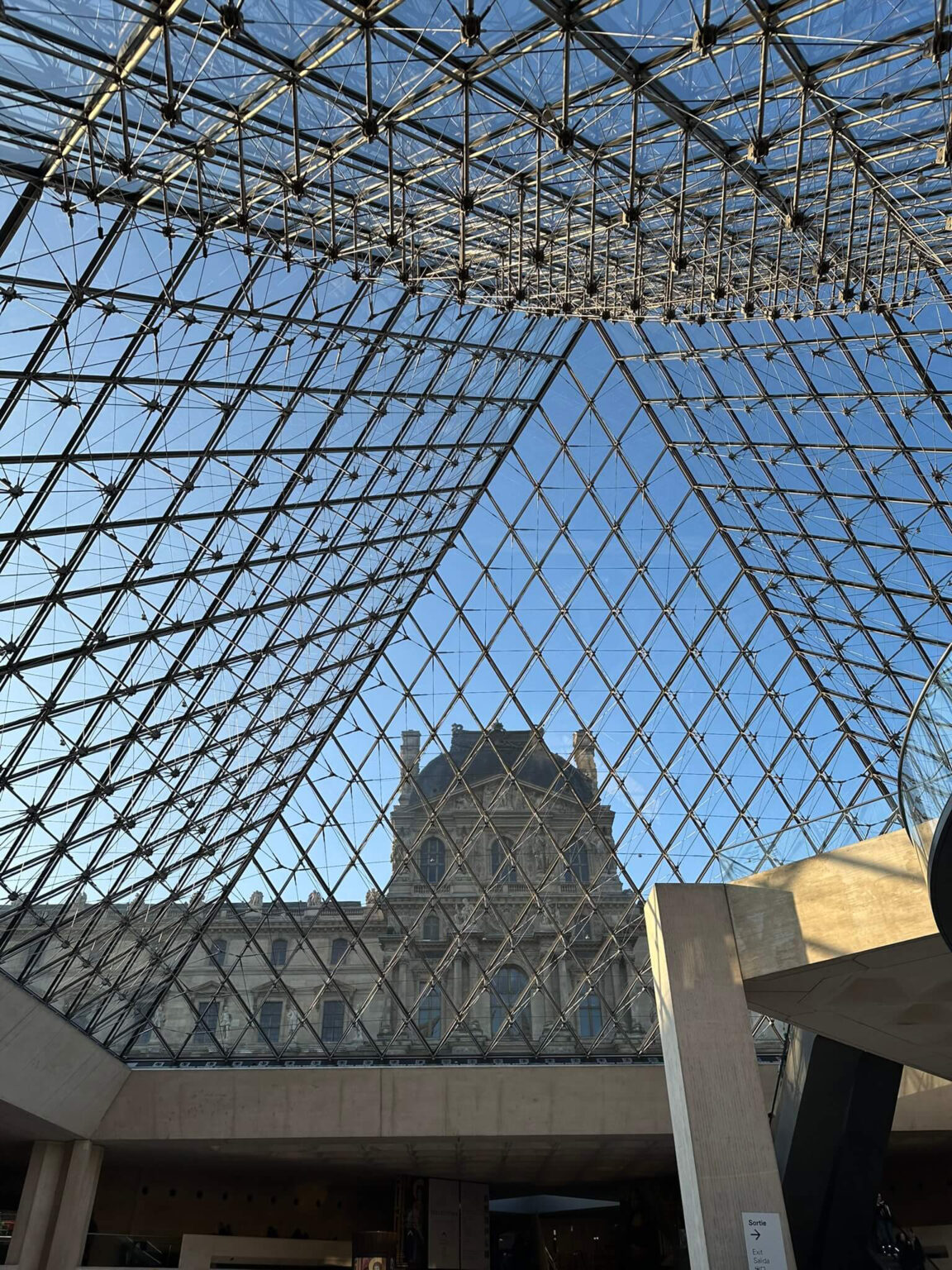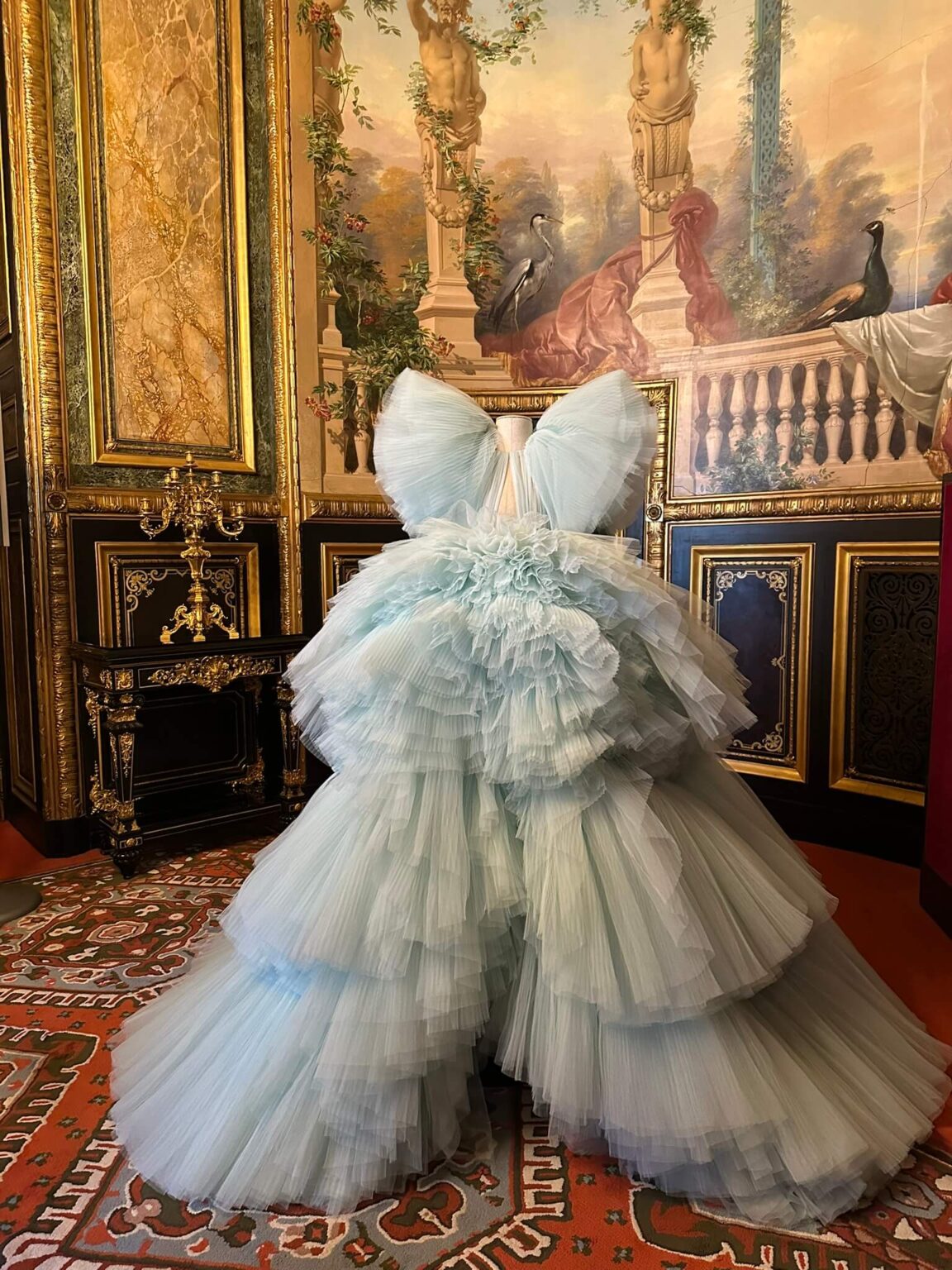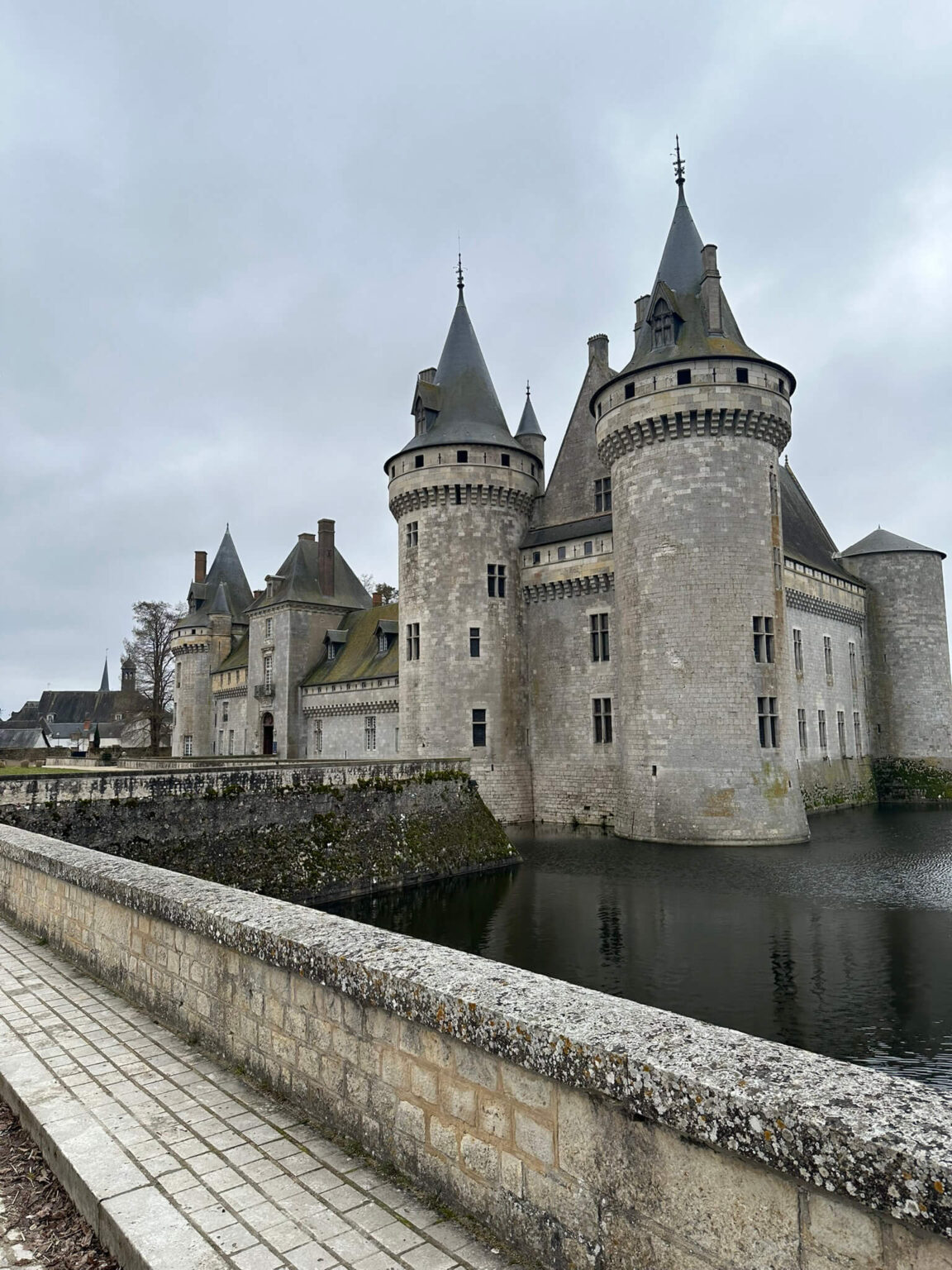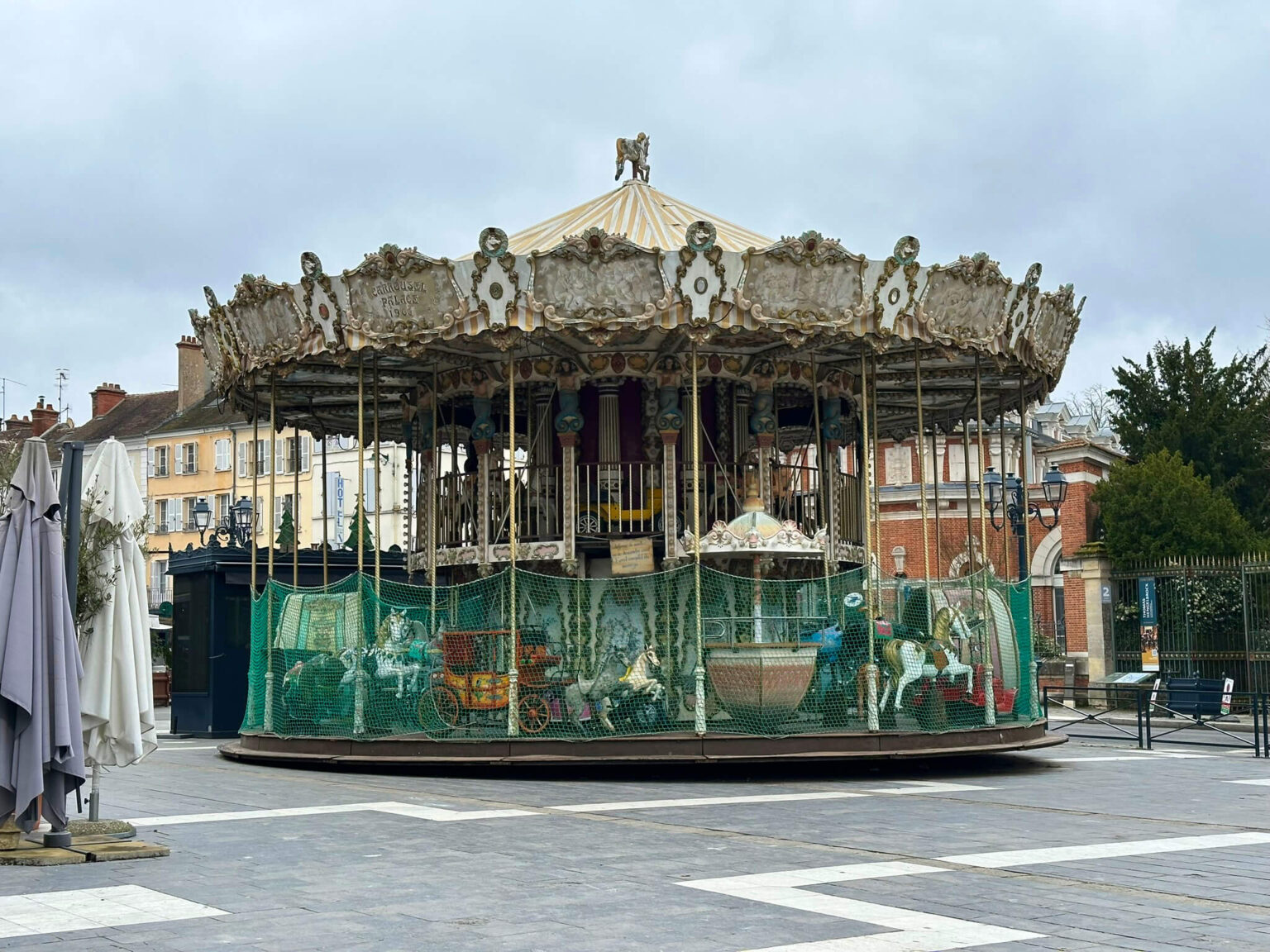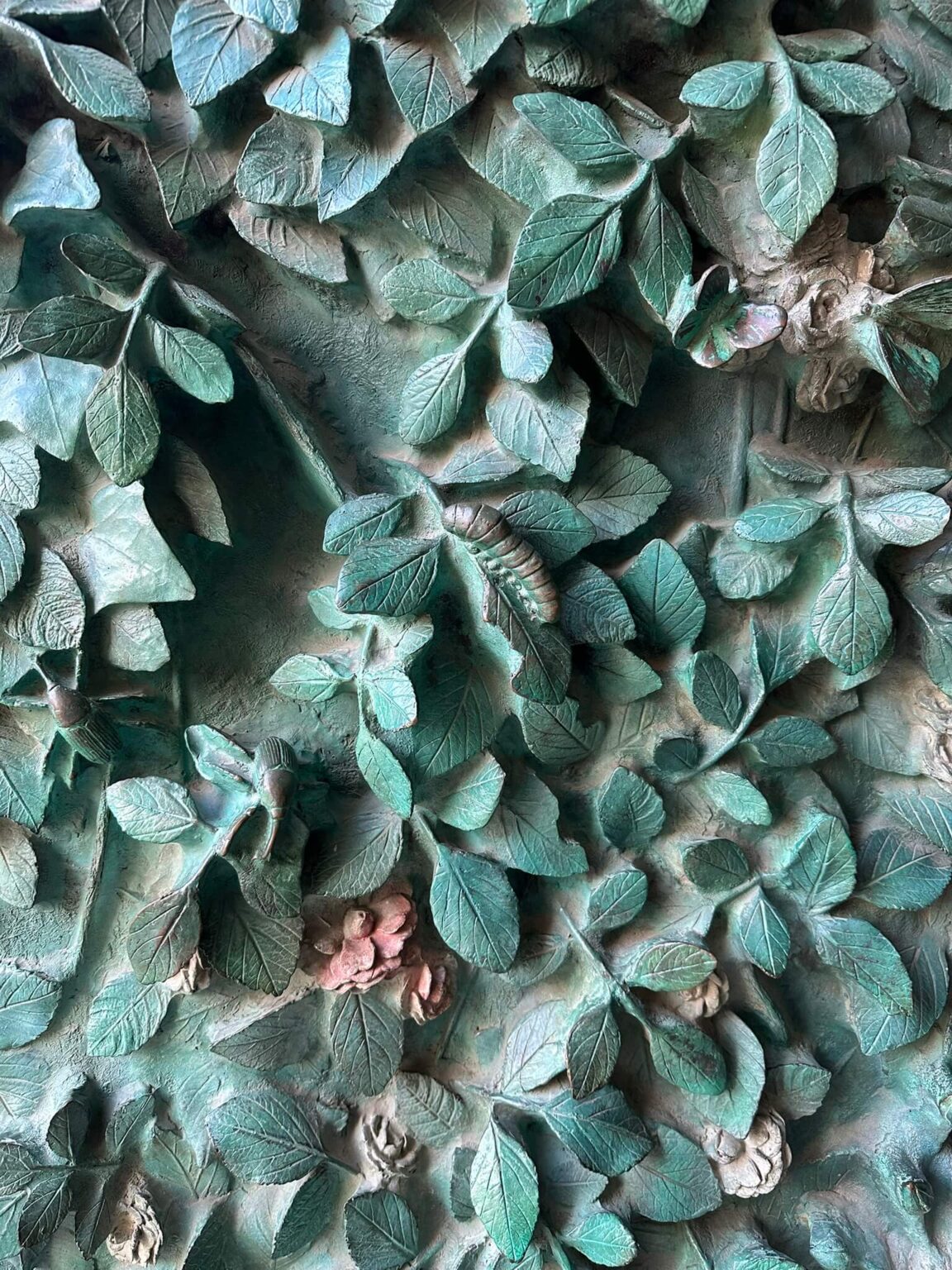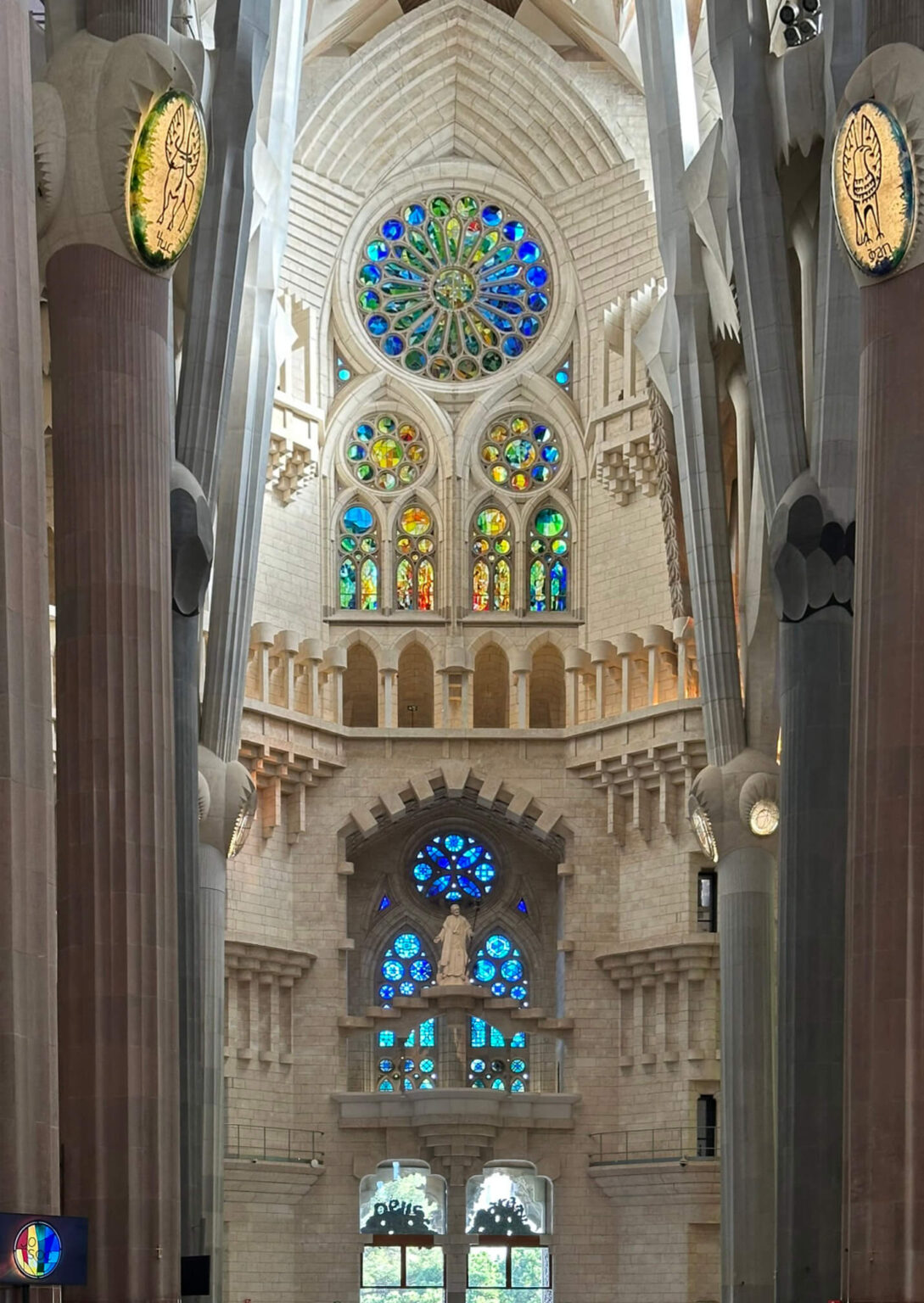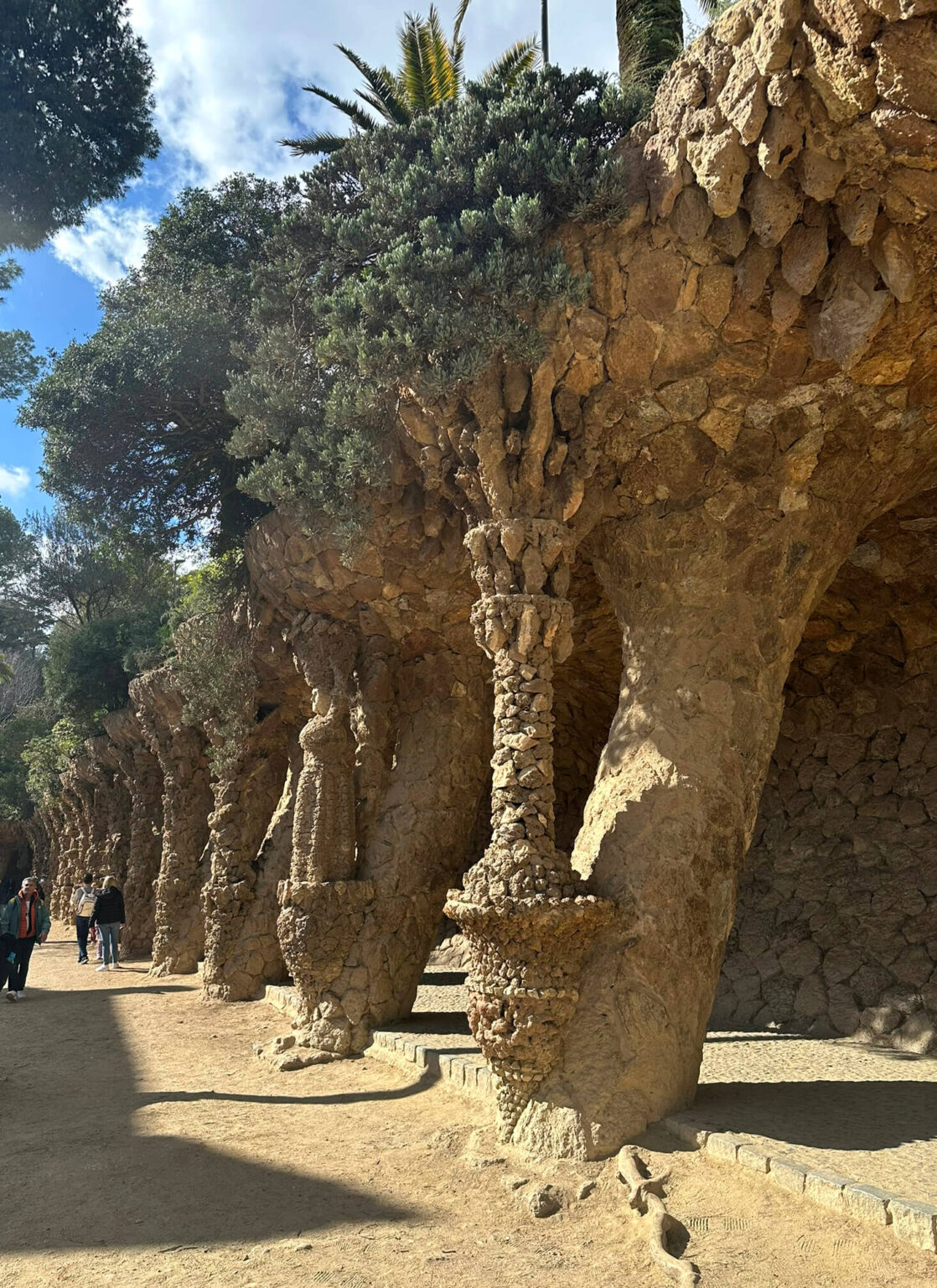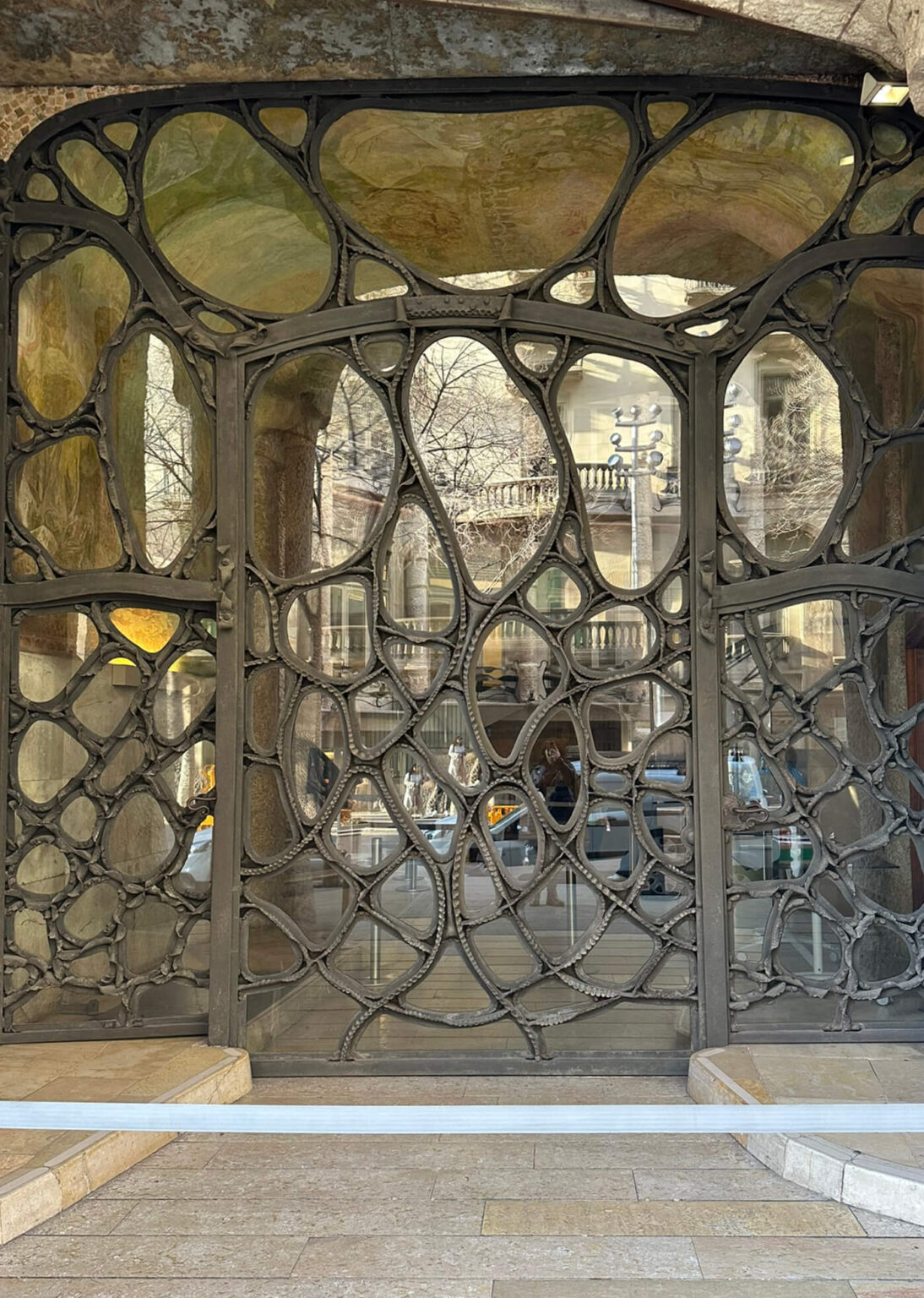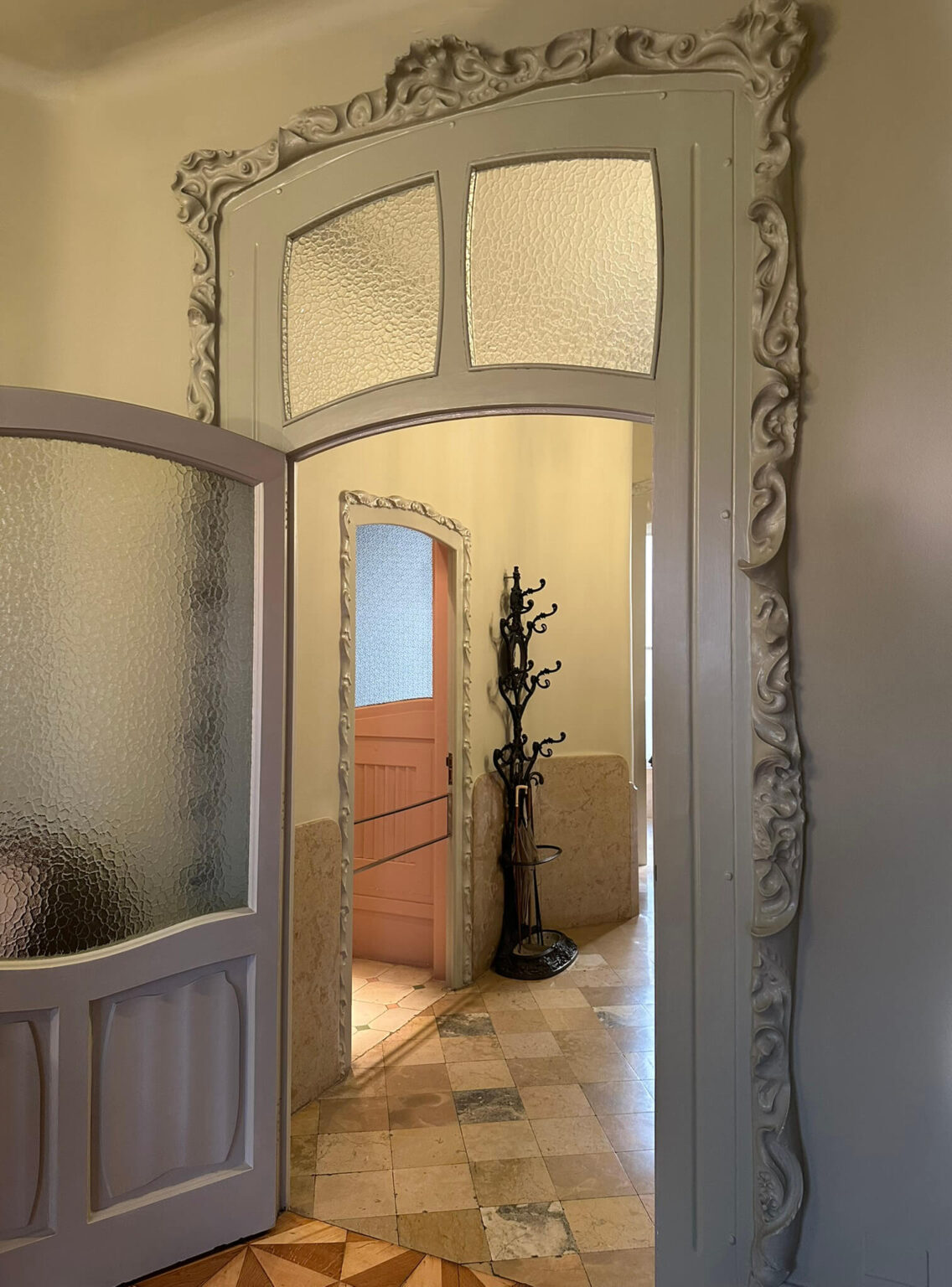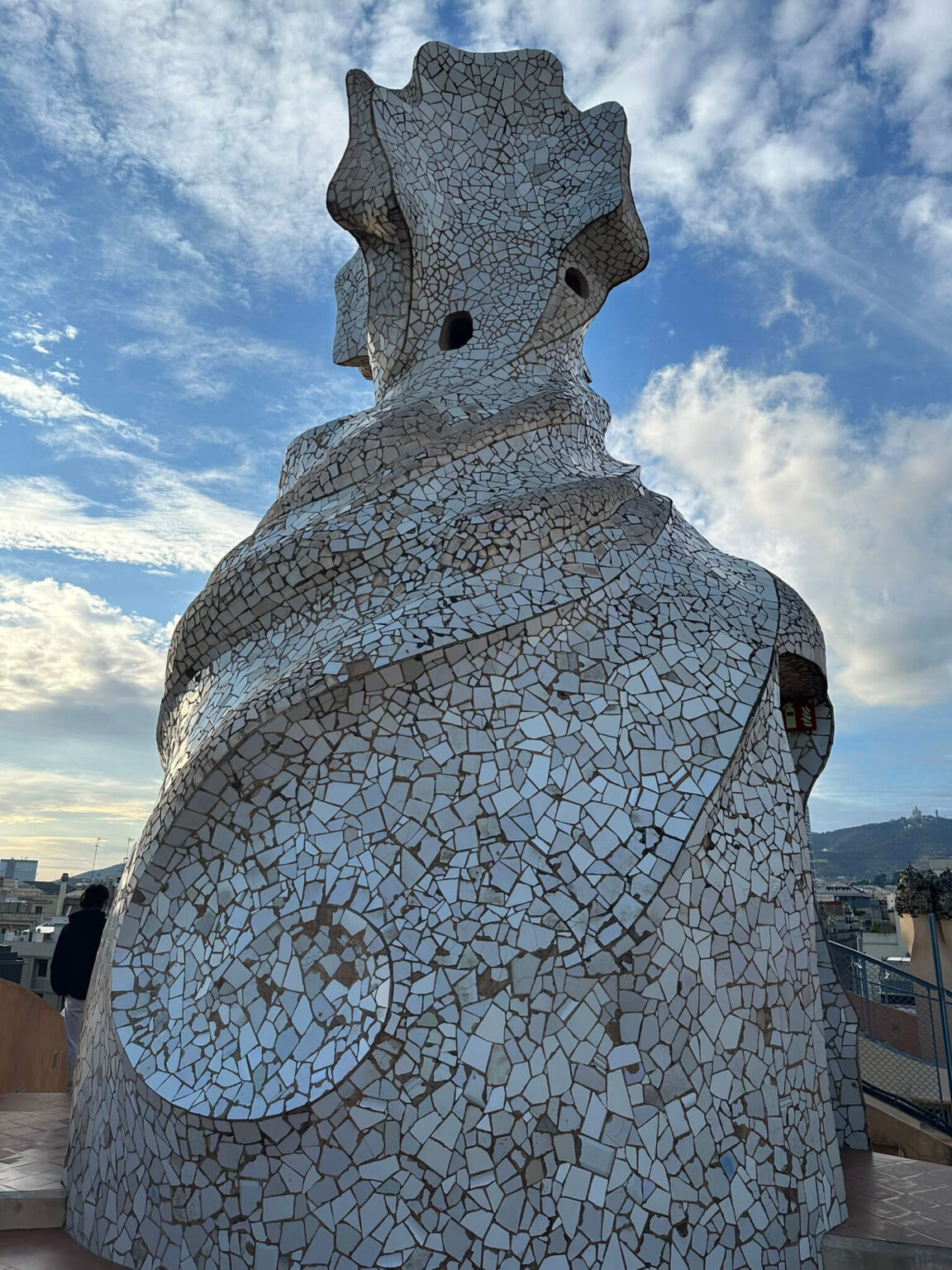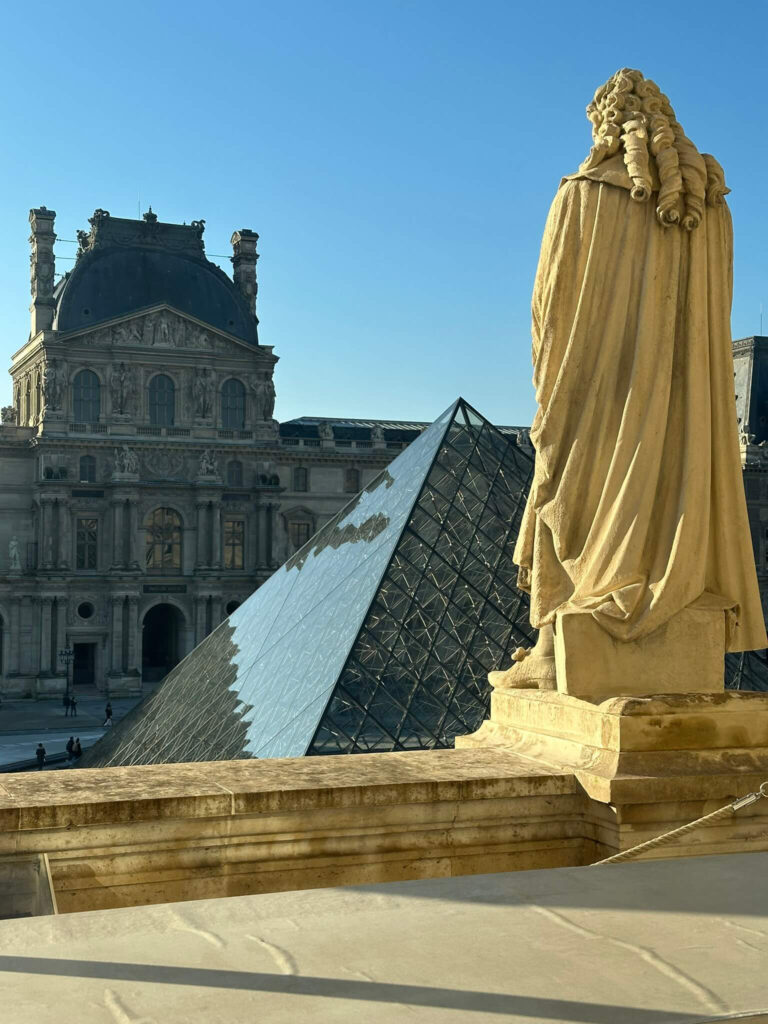
My Tour de France
To celebrate my 40th birthday, my best friend (a fellow interior designer from Los Angeles) and I went on an unforgettable European vacation earlier this year. We planned to spend a few days in Paris and then drive to Barcelona—something deemed highly strange by the pastry chef at a baking class we took on Day 3, but something that made perfect sense to us. We mapped a route to stop at various chateaus along the way for a chance to see more of the country than a typical visit to Paris would allow. We’ve taken a number of road trips together over the years and felt one through Europe should be no different.
The first day in Paris brought a pre-dinner trip to the Bourse de Commerce – Pinault Collection, a contemporary art museum housed in a building with a storied 500 year history. Located on the site of a 16th century hotel, the building was home to a wheat market in the 18th century, the Commodities Exchange in the 19th and 20th centuries and later, the Chamber of Commerce. Over the years, it saw numerous fires and several reconstructions, including one in 1889 in which the dome covering the beautiful circular floor plan—originally wood, later copper—was restored with metal and glass, to be named a historical monument in 1986. In 2016, Francois Pinault announced that the Chamber of Commerce would leave the building, and he would repurpose the space for what it is today. Tadao Ando was one of several architects tasked with the restoration process, and it opened to the public in May of 2021. When we were there, the main rotunda was empty, but it allowed us to appreciate the history of the space in its entirety and see the additions Ando made that brought the museum into the 21st century. We finished the evening at Tekes, whose vegetarian menu embraces the Middle East. We had the best meal of the trip on the first night!
Day 2 brought a morning tour of The Catacombs and the Musée Rodin, where we were treated to a large installation by the artist Rithika Merchant. Her works were the setting for Dior’s Spring-Summer 2025 fashion show which was held in the sculpture garden for Paris Fashion Week. She created nine paintings which were translated into textile panels by the Chanakya ateliers and Chanakya School of Craft. After a quick lunch, we visited Saint-Chapelle, Notre Dame, walked the flea market in Saint-Ouen, and watched the sunset from Montmartre. After dinner, we took in the show at the historic Moulin Rouge.
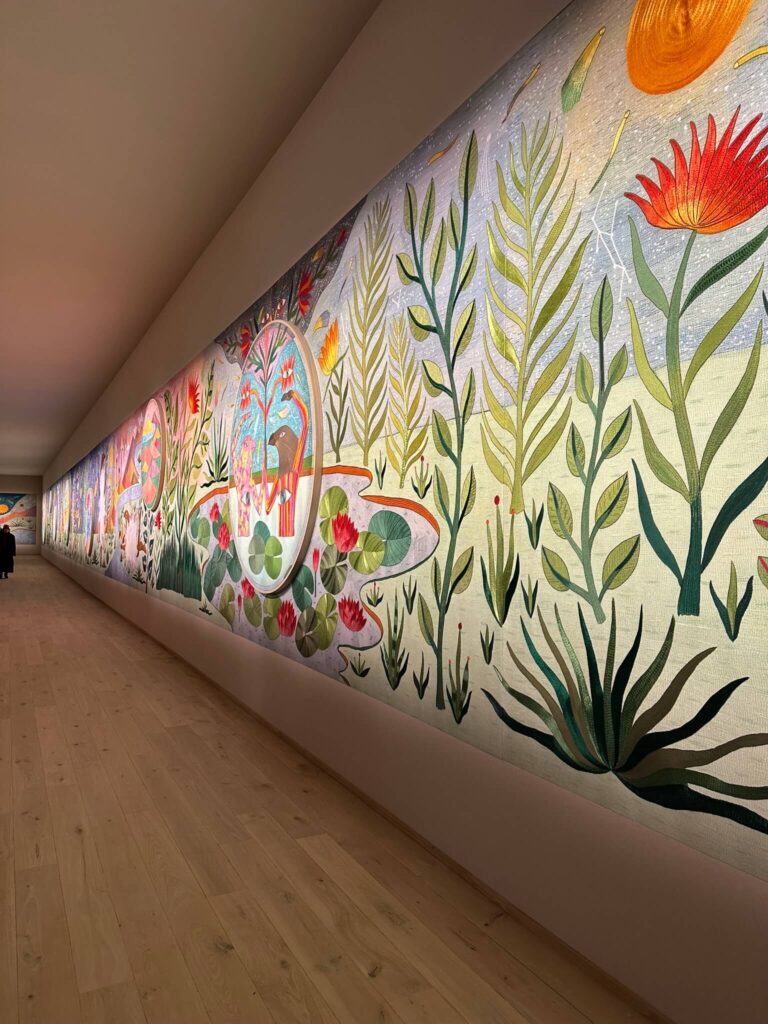
For me, Day 3 brought the most “French” experience a New Yorker could ask for. It started with a visit to the Louvre Couture show which had the most breathtaking fashions on display amongst the museum’s historical interiors. The play between the textiles of the preserved interiors and the beautiful frocks and accessories by the world’s best fashion houses created a magical wonderland we didn’t want to leave. The pieces were curated throughout the exhibit in a way that allowed you to experience the interiors and be surprised by the presence of garments. Some were tucked in corners of rooms, while others were front and center. My favorite piece in the show was a baby blue gown made of over 600 meters of tulle by Giambattista Valli. After our morning at the museum, we spent the day checking off boxes for all of the Paris classics—macarons from Ladurée, visits to the Eiffel Tower, the Arc De Triomphe, and the Champs Elysees, the aforementioned baking class where we made croissants and pan au chocolate with a group of travelers. On a whim, we stopped by La Boule Noire in Montmartre to see a band we knew, and then it was back to the Eiffel Tower for a night tour. On this particular evening, the monument was shrouded in fog which meant we couldn’t see much from the observation deck, but it felt moody and French in its own way! Dinner, on the other hand, wasn’t particularly French or glamorous—two McRoyal’s with cheese and fries (French of course) to go!
Over the next few days we visited Versailles, Disneyland Paris, and Musee D’Orsay, did some shopping, and then it was off to Barcelona. Our first stop on the way was at Chateau de Fontainebleau located in Fontainebleau, France, a little over an hour outside of Paris by car. This was a house for the family of the French monarchs from the Middle Ages through the 19th century. While this property isn’t as ornate as Versailles, it made me wonder how there’s any gold left in the world! The gilding used throughout these chateaus and on lighting and furniture was consistent and abundant. Fontainebleau houses the most extensive collection of period furniture, art, frescos, and decorative artefacts of almost any of the European chateaus, making it a great place for two interior designers to visit. Louis XVI and Marie-Antoinette used the property as a respite on the eve of the French Revolution to separate themselves from the ostentatious attitude of Versailles. This chateau became the Imperial palace after the revolution and houses the only intact Napoleonic Throne room left in existence. Since 1981, Chateau de Fountainebleau has been designated a UNESCO World Heritage site.
After leaving Fountainebleau, we stopped at the Chateau de Sully-sur-Loire in Sully-sur Loire, France. Originally built as a castle in 1395, it was eventually converted into a private residence. It is a beautiful example of Medieval construction featuring arrow slits, a moat, and many other defense features common to castles across Europe. We stayed overnight at an Airbnb in Chevroches in a home that was once an outbuilding for a limestone quarry. For dinner that evening, we enjoyed cheese with wine and baguette and got some rest for the next leg of our journey.
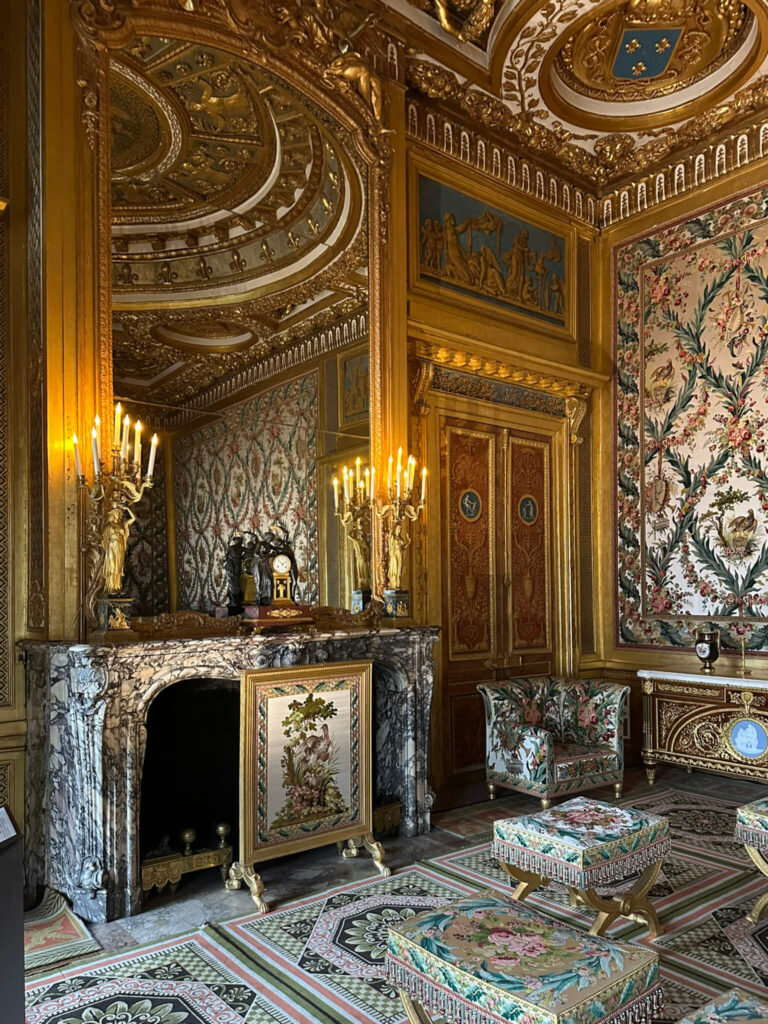
The next day we headed out early to continue our drive south to Spain, with a planned visit to the Auvergne-Rhône-Alpes region, stopping to explore a number of small cities and villages along the way. An interesting observation we made was how so many of them have decommissioned carousels sitting in the center of town. Still beautiful representations of France’s love of art, history and leisure, these carousels were a favorite subject of our photography. Our destination, Clermont-Ferrand, is a city situated in the shadow of a line of volcanoes known as the Chaîne des Puys. There we visited the Gothic Cathédrale Notre Dame de l’Assomption which sits near the city square. Constructed from lava stone, the cathedral has a dark, monochromatic exterior, and is known to locals as the Black Cathedral. For our last evening in the south of France, we made our way to Perpignan for dinner at Manat, which features a Japanese inspired menu of seasonal fair. We stayed overnight in a Harry Potter-themed Airbnb.
My Road Trip Through Spain
Our first stop in Spain was to the city of Figueres, to the Dalí Theatre-Museum, whose architecture was the most provocative of the trip. The building was originally a theatre and was the first place to display Salvador Dalí’s works when he was young. After burning down during the Spanish Civil War, it remained in ruins until the 1960s, when Dalí and the mayor decided to rebuild it as a museum dedicated to Dalí himself—the most famous artist to ever live in Figueres. It houses the largest and most distinct collection of Dalí’s works, most of the pieces coming from the artist’s personal collection. The interior of the theatre, which is the main building of the museum, was decorated to look like visitors are walking through one of the artist’s paintings. Dalí actually lived in a tower at the museum for several years and was eventually buried in a crypt inside. For me, most extraordinary was an annex that features a large collection of Dalí’s jewelry designs. On display in darkened rooms amongst natural crystal formations, the jewelry collection is next level and a must-see for any visitor.
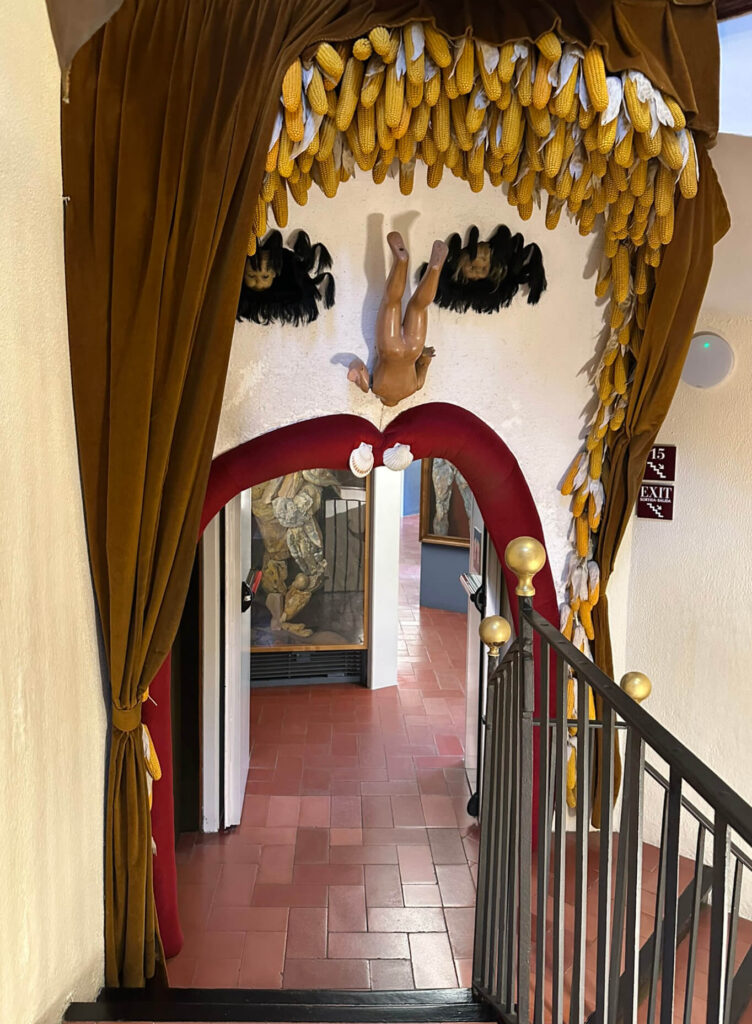
From Figueres, we headed to Girona, which is a city best suited for walking, as many streets are too narrow for cars (which I’ll just say, we learned the hard way!) We found a place for brunch and wandered the streets, stopping in shops along the way. Before leaving, we happened upon Banys Àrabs de Girona where visitors can take a self-guided tour through the bath houses created in 1194.
It was a warm, sunny day when we finally arrived in Barcelona, and settled into our rooms at the Hotel Pulitzer where we had balconies overlooking the city. For the duration of our trip, we would shed our jackets and immerse ourselves in the history of Antoni Gaudí. On our first evening, we an exquisite dinner at La Dama, a beautiful restaurant housed in Casa Sayrach, originally a private residence designed by Manuel Sayrach who was a disciple of Gaudí and Modernisme architecture—Barcelona’s unique style of Catalan Art Nouveau.
Bright and early the next morning, we set out on foot—walking the recommended mode of getting around Barcelona, because it is such a gorgeous city and easy to navigate—and passed by Casa Batlló where we were scheduled to take a night tour that evening. From there we went to Basilica de Sagrada Familia, which we could see rising in the distance as we approached. Five generations of Spaniards have watched the construction of this house of worship and it’s almost overwhelming to experience. From the outside of the church, which is still under construction, the metal work is delicate and whimsical. Walking into the main nave, it’s hard to know where to focus your attention. The ceilings are soaring, the space is grand, but the light streaming through the various stained-glass windows caught most of my attention. It’s hard not to feel at peace when walking the space. From the top of one of the many towers, you can see all the way to the Balearic Sea.
Our next stop was Park Güell, which is an entirely different experience to that of the Basilica or any of the other Gaudí buildings we would see. Park Güell was originally supposed to be a housing development for wealthy families in Barcelona. When the different plots of land didn’t sell, it became a private garden. Only two of the planned sixty houses were built. In 1926 it became a public park, eventually becoming a UNESCO World Heritage site in 1984. The park has two distinct sections—the forest, and the monuments area, which is where you will find most of Gaudí’s works. There are two buildings, brightly colored mosaic fountains, and La Plaça (The Square). La Plaça features a colorful, undulating bench which is supported by its own forest of 86 columns forming Sala Hipòstila. Here you get spectacular views of the city.
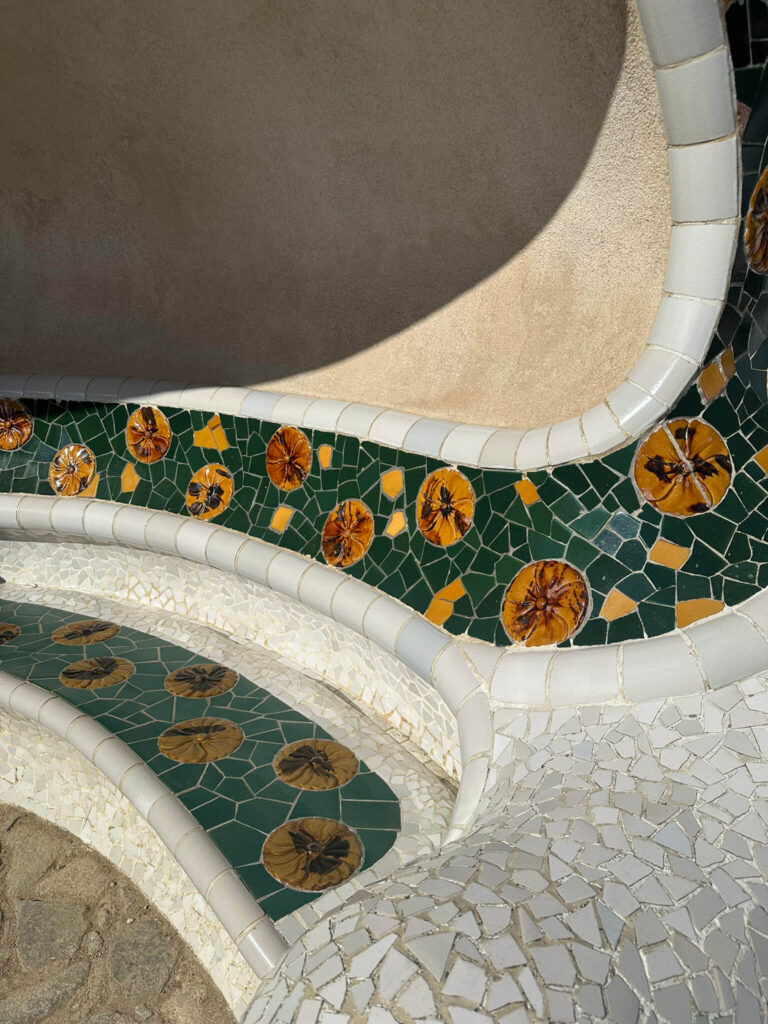
The final Gaudí stop of the trip was to La Pedrera – Casa Milà, the last private residence he designed. The main floor of the building was to be a home for the family who commissioned him, with apartments above to be rented out. Because of its unusual structure, the building was originally mocked but has become a popular tourist attraction for the city. This was one of the more interesting sites for us to walk through, as we were able to get a better look at the small details that were probably only important to the family that lived there. The layout of the rooms, tile work, and details carved around every door frame were amazing to see. The hallways outside of the apartments above were grand and filled with natural light. The attic and the rooftop terrace were especially beautiful with pathways around the roof that undulated in the setting sun, highlighting views of the city with Basilica de Sagrada Familia continuing to rise in the distance.

Looking back, it’s impossible to call any one moment of the trip or place that we visited the best or my favorite. All of it, from beginning to end, was inspiring and exciting, and will live in my memory for years to come. As a designer, a lot of my work is visual and whether it’s intentional or not, it usually tells a story which is created through a process of learning and assembling—learning about a client’s motivations and interests and assembling a collection of colors, textures, materials and textiles, furniture, furnishings and art that bring those interests to life. Hours of focused research go into these assemblages of course, but they are also formed using inspiration, from things seen, from places visited and experiences lived. Travel provides all of this! I don’t know when or where a textile reminiscent of one I saw at Versailles or a curved edge that evokes Gaudí’s architecture will show up in one of my projects, but I’m sure some day, one will. And until then, I’m studying the world map, figuring out where it is that I want to go next.
